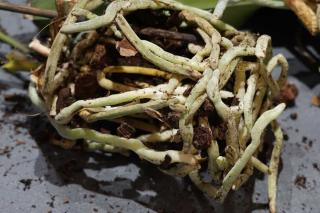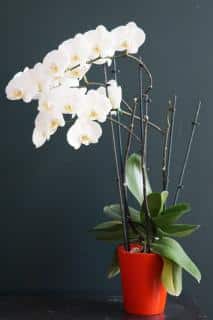

Repotting an orchid is an important step in the life cycle of the plant.
To repot it, you need to proceed differently as for other houseplants.
After having bloomed well, your orchid seems a bit down and you don’t know how to make it peppy again.
One of the first things you can do is to repot it in a new pot.
Follow our repotting tips for orchids, and you’ll see that within a few days, it will already have gotten stronger and will be ready for a new bloom.
Repotting usually takes place every 2 or 3 years, in any season provided it is after the blooming.
This plant doesn’t like being disturbed, and repotting it too often might weaken it.
The new pot must be chosen based on the size of the plant.
It should neither be too small because the orchid might lose its balance, nor too big because roots must feel that space is tight to develop into a bloom.
Generally, simply select a pot that is only very slightly larger across than the previous.

It usually contains high amounts of composted maritime pine bark.
It’s possible to make your own from bark and other ingredients. You might have to observe how the plant is doing to adjust the contents, though.
 Delicately pull out the plant from its present pot.
Delicately pull out the plant from its present pot.Your plant will now need several days to get used to this new pot and the roots will need 1 to 2 weeks to heal their wounds.